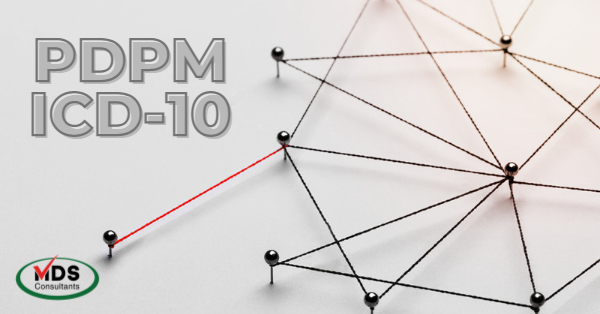With the beginning of fiscal year 2021 October 1, there will be the expected changes to our MDS and billing processes. This year the number of changes is limited due to the unprecedented public health emergency we are experiencing with COVID-19. Despite that, we can expect updates to the PDPM ICD-10 Mapping Tool this year.
The following changes will be effective October 1, 2020:
- Certain Cancer ICD-10 Codes– Previously specific cancer diagnoses that could require a major surgical procedure did not include an option to map into a surgical category. CMS has added surgical clinical category options of “Maybe Eligible for the Non-Orthopedic Surgery Category” or “Maybe Eligible for One of the Two Orthopedic Surgery Categories” to the clinical category mapping when a major procedure is identified on the MDS. CMS realizes that a major procedure for these diagnoses in a prior inpatient stay could affect the plan of care.
Codes range from C15 to C80.1 and D37.09 to D49.7
- Certain Fracture Codes– Previously specific fracture diagnoses, such as Lumbar Vertebral Fracture, would map to “Orthopedic Surgery” or “Major Joint Replacement or Spinal Surgery” even when no surgery was performed. CMS changed the default clinical category associated with these diagnoses to “Non-Surgical Orthopedic” with the surgical option of “Maybe Eligible for One of the Two Orthopedic Surgery Categories.”
Codes include S32.031D, S32.19XD, S82.001D, and S82.002D through S82.002J
- Unspecific Fracture Codes– CMS changed the default clinical category of unspecified fracture codes to “Return to Provider” because these codes are unspecific and lack the level of detail required as to whether the condition is on the right or left side of the body.
Codes include S82.009A, S82.013A, S82.016A, S82.023A, S82.026A, S82.033A, S82.036A and S82.099A
- Spinal Stenosis Codes– Previously, spinal stenosis diagnoses that could require a major surgical procedure did not include an option to map into a surgical category. This mapping did not allow for coding in cases where patients had spinal surgery. CMS has changed the surgical option to “Maybe Eligible for One of the Two Orthopedic Surgery Categories.”
Codes include M48.00 through M48.08
- Surgical Aftercare Codes– Z48 surgery aftercare codes previously mapped to the default clinical categories of “Return to Provider” or “Medical Management,” even if a surgical procedure was indicated in J2100 of the MDS. CMS has changed the surgical option to “Maybe Eligible for the Non- Orthopedic Surgery Category” to these surgery aftercare codes.
Codes include Z48.21, Z48.22, Z48.23, Z48.24, Z48.280, Z48.288, Z48.298, Z48.811, Z48.812, Z48.813, Z48.815, and Z48.816
The ICD-10 Code Mapping Tool for the Non-Therapy Ancillary Component was also updated. In the Proposed Rule, there was one notable change in the list of diagnoses used to identify “Complications of Specified Implanted Device or Graft.”
CMS has added diagnosis codes to the list with the seventh digit of D for use in the ICD-10 code mapping to the NTA comorbidity CC176 “Complications of Specified Implanted Device or Graft” to calculate the PDPM NTA score.
These ICD-10 codes, T82.310D through T85.89XD, can now be coded at I8000 of the MDS to capture 1 NTA point for this category.
More Resources
Find the New PDPM Mapping Tool effective Oct 1, 2020: https://mdsconsultants.wpengine.com/helpful-cms-info/
PPS Final Rule FY2021- https://www.federalregister.gov/documents/2020/04/15/2020-07875/medicare-program-prospective-payment-system-and-consolidated-billing-for-skilled-nursing-facilities
